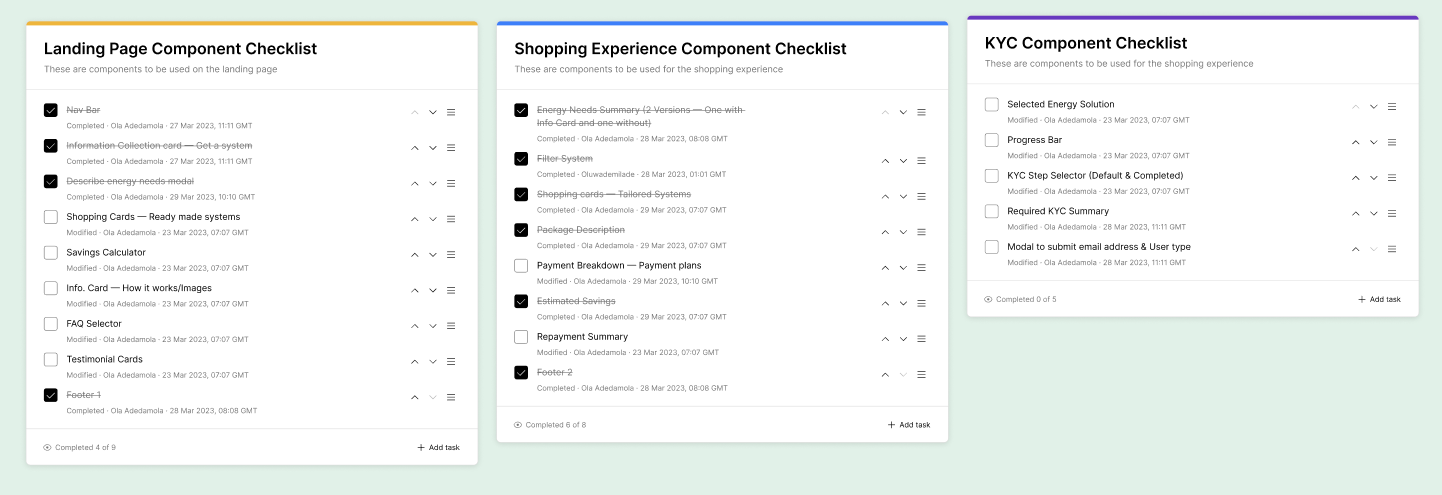Go back
Building Design Maturity at SunFi: From a One-Person Function to a Scalable, AI-Powered Design Organization
How I scaled SunFi’s design team from one to five. Introducing AI-powered workflows, a scalable design system built on variables, and a strong design culture capable of thriving independently.

First, the outcomes & impact
The transformation resulted in measurable improvements across the board:
💡
100% drop in mobile responsiveness issues across all SunFi Product verticals.
💡
Faster design handoffs and reduced misalignment with developers.
💡
A unified design language across all SunFi products.
💡
Accelerated onboarding for new designers through systemized documentation.
💡
Improved design velocity through AI-assisted workflows.
Background
When I joined SunFi, design already existed, but it lacked structure. The company was scaling quickly, yet the product design function lacked a clear process, design language, or documentation. Figma files were scattered across initiatives, and design ownership was fragmented.
This led to inconsistent interfaces, unresponsive mobile views, and an overall lack of clarity across projects. My mission was to transform SunFi’s design practice into a scalable, high-performing function that could deliver consistently, with speed and impact.
The Challenge
SunFi needed more than just improved visuals—it needed a design culture.
Key challenges included:
🧩
Inconsistent design language across projects.
📑
No formal process for design documentation or collaboration.
📵
Unresponsive mobile experience, despite the majority of users being on mobile.
🧑🤝🧑
Limited alignment between design, product, brand, and engineering teams.
The goal was to build a structured, collaborative, and future-focused design organization capable of delivering scalable, user-centered solutions.
This structure built confidence, improved collaboration, and fostered a culture of taking ownership across the design team.
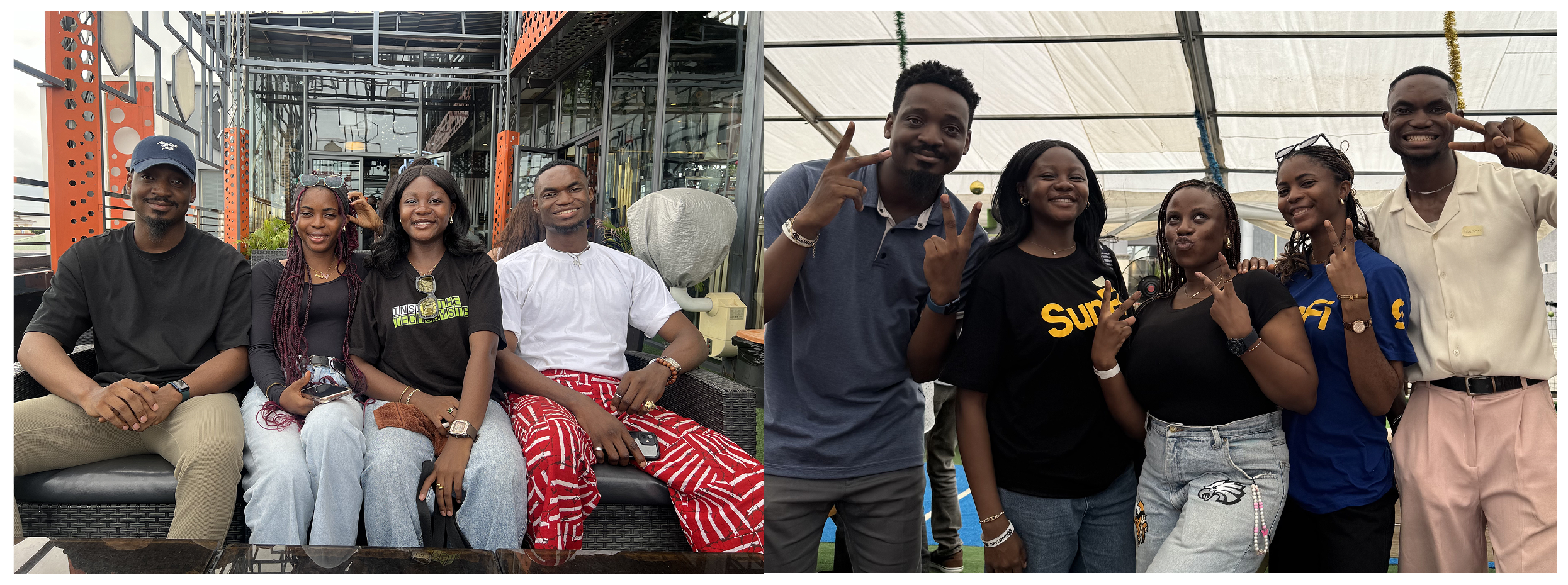
The product design team (Myself, Oluwademilade-Adunbi David, Temitayo Eleyinmi, Oluwatosin Adentan, & Tracy Esun)
Establishing the SunFi Design System
When I joined, a few inconsistent styles existed, but there was no real system.
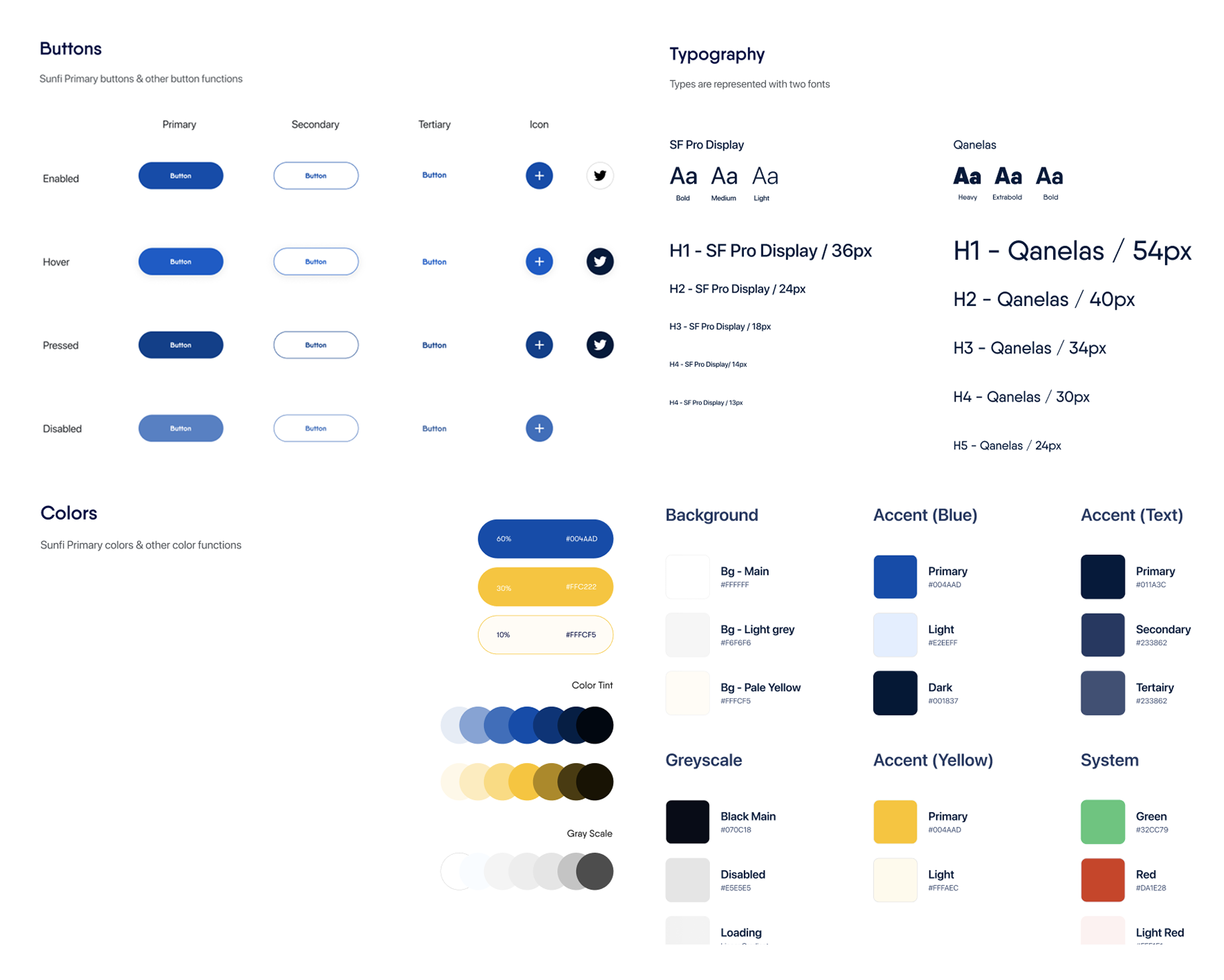
What the SunFi old design system looked like.
As the company grew rapidly, I realized our existing design system wasn’t scalable. I began by refining what we had, establishing foundational style guides for colors, typography, and spacing— then rebuilt our designs into fully functional components using Figma Auto Layout, replacing the old grouped elements.
Creating a checklist of the needed components, especially for high-priority initiatives
Over time (After 2years), we developed a scalable design system that grew to include over 2,500 reusable components, ensuring visual and functional consistency across SunFi’s ecosystem with a great adoption rate starting with the design team.
As the team lead, I prioritized ensuring that every designer consistently used components from the design system. To reinforce this, I included design system contribution and adherence as part of each team member’s quarterly OKRs, making it a shared responsibility across the team.
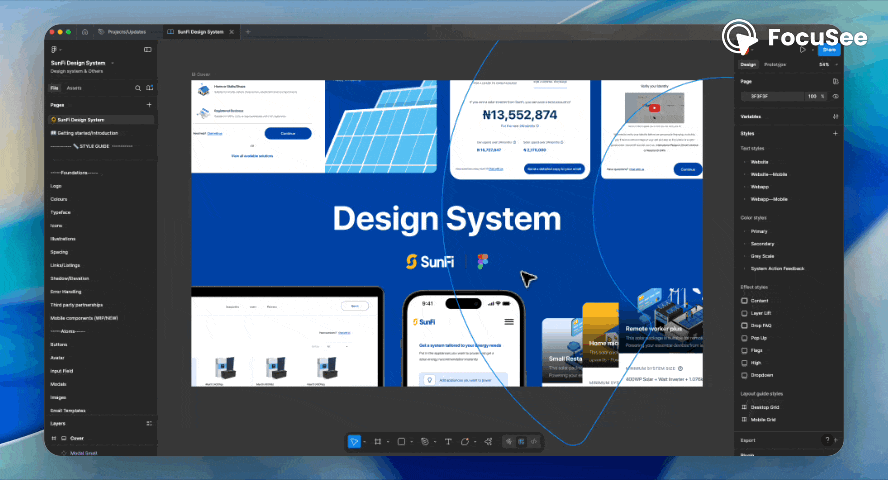
The SunFi Design System, showing reusable components
Introducing a Mobile-First Mindset
Through insights from Mixpanel, Hotjar, and Google Analytics, we discovered that over 70% of SunFi’s users accessed the platform across all products and offerings via mobile. Even most user screenshots during support escalations also came from mobile interfaces. And with the fact that mobile responsiveness is something we as a team have been trying to resolve right since I joined the team.
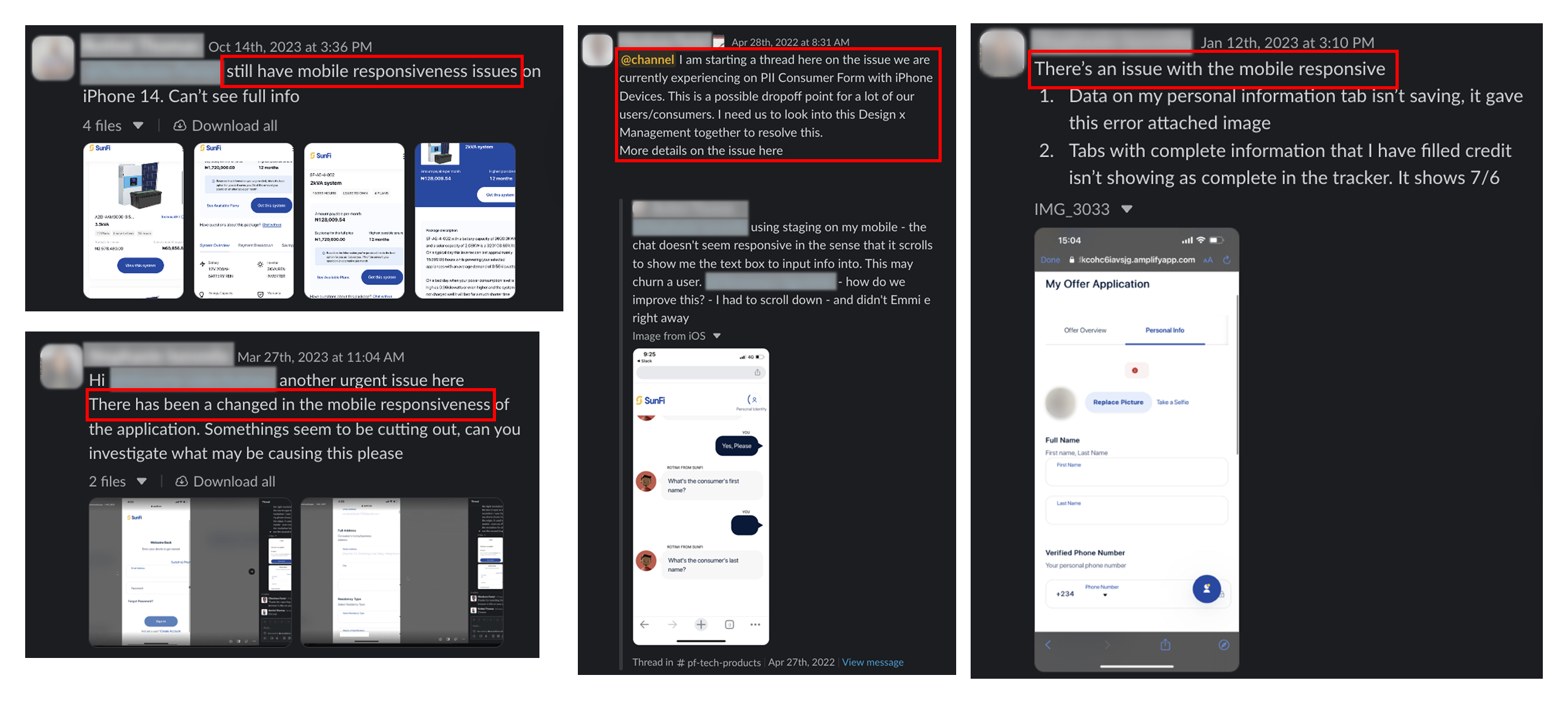
Some mobile responsiveness escalations
Recognizing this, I introduced a mobile-first design approach — ensuring every flow and component was first optimized for smaller screens before scaling up.
Beyond just creating reusable components, we also started using Figma variables and modes for mobile and desktop tokens. With this approach, we were able to eliminate the inconsistencies that had previously plagued the product.
Within the design system file, I created a set of standards for both desktop and mobile modes, with tokens in numbers such as font size, line height, corner radius, spacing, etc, having over 50 tokens.
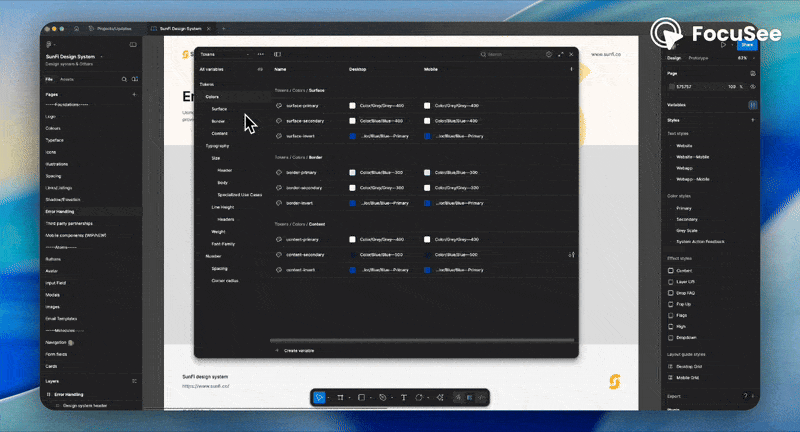
The use of variables and tokens within the SunFi Design System
The introduction of Variables and tokens allowed us to build responsive components using Figma modes. This way, designers on my team could easily design mobile first and convert to desktop easily

The use of Figma modes to convert from mobile to desktop
Introducing AI-Powered Design Workflows
To accelerate design velocity and improve collaboration, I initially introduced the use of Stitch AI (formerly Galileo AI) as a way for my design team members to generate wireframes faster for idea validation before moving into the high-level designs.
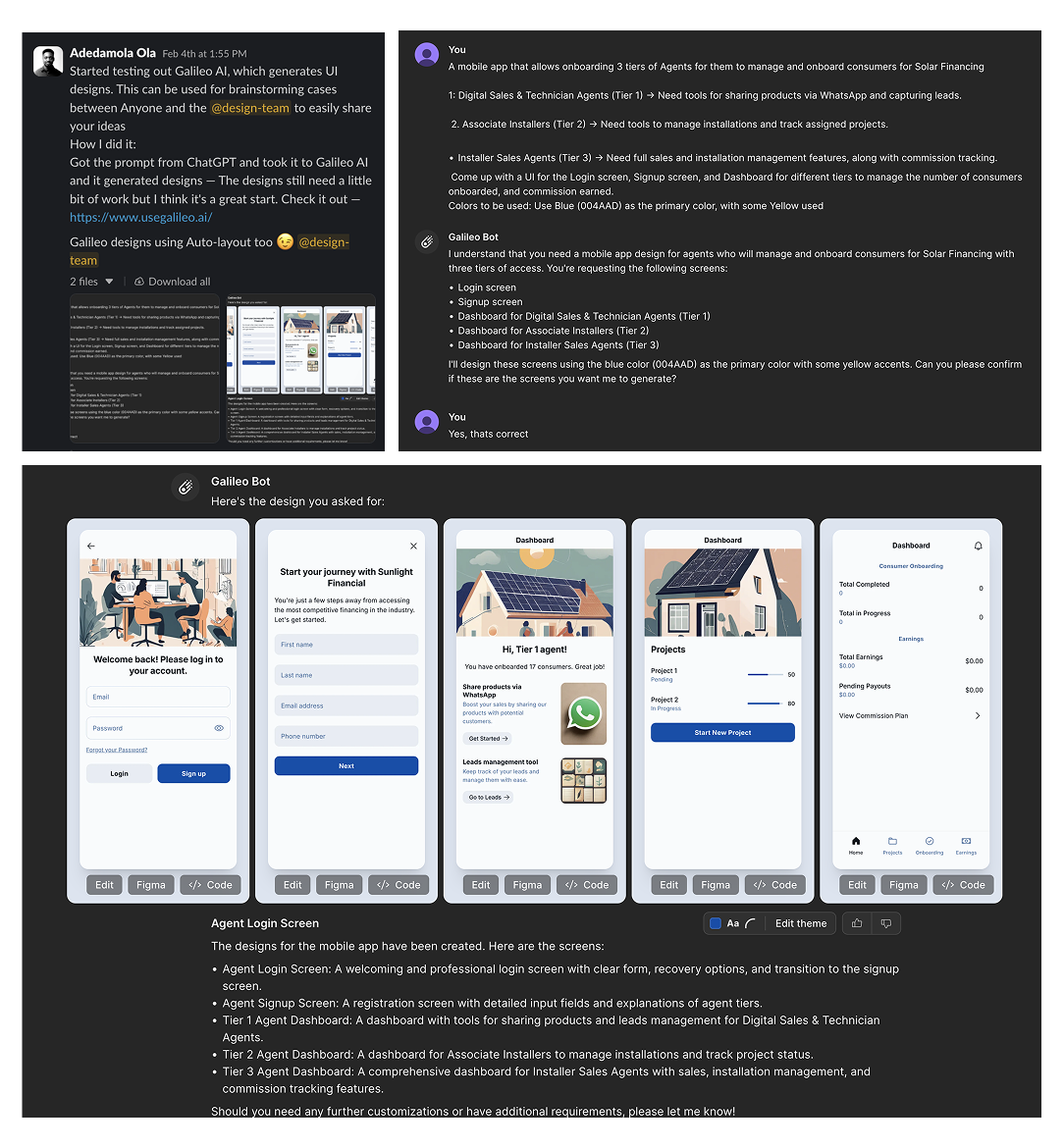
Generating design wireframes in Stitch AI (formerly Galileo AI)
With Figma’s Make getting out of Beta in July 2025, I saw this as the best opportunity to introduce it in the product design team’s process. With Figma Make, we were able to build an interactive wireframe faster and also test with our users, resulting in shorter validation time. I didn’t just introduce Figma Make into our process; I also ensured that we used it with the existing SunFi Design System to generate wireframes directly from written prompts and flow descriptions.
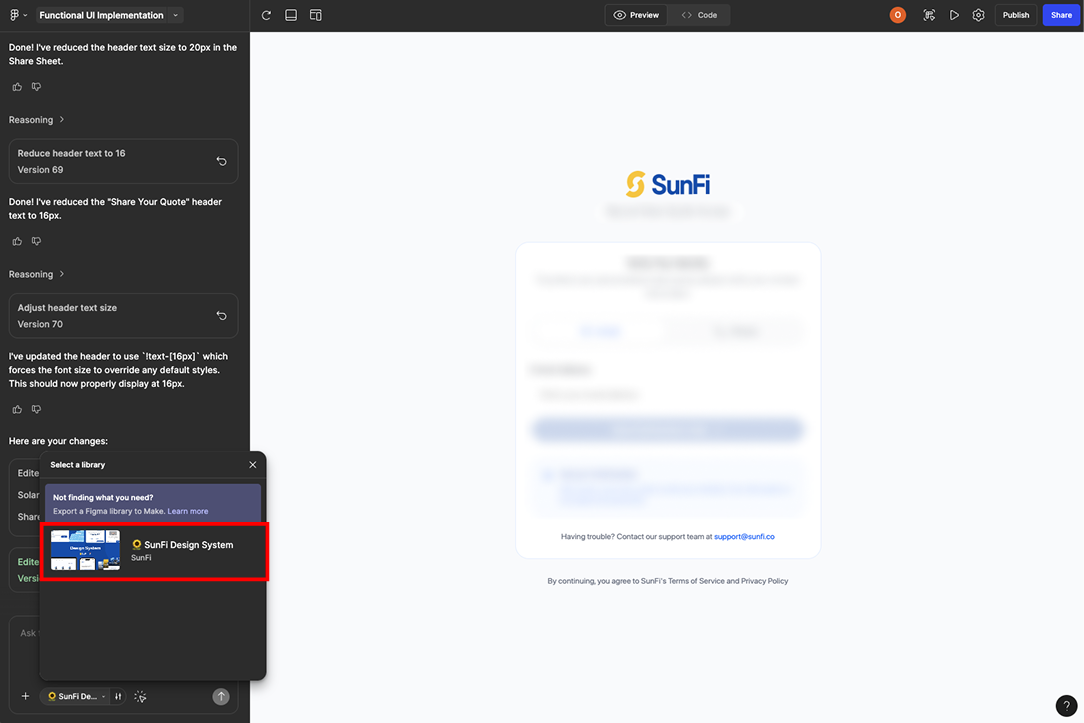
An example of an ongoing wireframe execution using Figma Make with the shared SunFI Design system
This AI-assisted workflow allowed the team to:
💡
Rapidly create and test wireframes during early ideation.
💡
Validate flows with stakeholders, both internal and external, before moving to high fidelity.
💡
Iterate faster by using AI as a foundation for discussion and refinement.
This shift dramatically reduced the time needed to move from concept to prototype and allowed us to align more effectively across design, product, and engineering.

An example of usability testing done with a user to validate the designed solution with a wireframe developed using Figma Make
Reflections
Building SunFi’s design function from a one-person role into a cohesive, five-person organization was as much about culture as it was about the hands-on craft.
By introducing scalable systems, leveraging AI for speed and collaboration, and fostering alignment across design, product, and engineering, we built more than just a design team — we built a design culture.
One defined by clarity, consistency, and curiosity — and one that continues to position SunFi as a leader in human-centered innovation.
Go back
Building Design Maturity at SunFi: From a One-Person Function to a Scalable, AI-Powered Design Organization
How I scaled SunFi’s design team from one to five. Introducing AI-powered workflows, a scalable design system built on variables, and a strong design culture capable of thriving independently.

First, the outcomes & impact
The transformation resulted in measurable improvements across the board:
💡
100% drop in mobile responsiveness issues across all SunFi Product verticals.
💡
Faster design handoffs and reduced misalignment with developers.
💡
A unified design language across all SunFi products.
💡
Accelerated onboarding for new designers through systemized documentation.
💡
Improved design velocity through AI-assisted workflows.
Background
When I joined SunFi, design already existed, but it lacked structure. The company was scaling quickly, yet the product design function lacked a clear process, design language, or documentation. Figma files were scattered across initiatives, and design ownership was fragmented.
This led to inconsistent interfaces, unresponsive mobile views, and an overall lack of clarity across projects. My mission was to transform SunFi’s design practice into a scalable, high-performing function that could deliver consistently, with speed and impact.
The Challenge
SunFi needed more than just improved visuals—it needed a design culture.
Key challenges included:
🧩
Inconsistent design language across projects.
📑
No formal process for design documentation or collaboration.
📵
Unresponsive mobile experience, despite the majority of users being on mobile.
🧑🤝🧑
Limited alignment between design, product, brand, and engineering teams.
The goal was to build a structured, collaborative, and future-focused design organization capable of delivering scalable, user-centered solutions.
This structure built confidence, improved collaboration, and fostered a culture of taking ownership across the design team.

The product design team (Myself, Oluwademilade-Adunbi David, Temitayo Eleyinmi, Oluwatosin Adentan, & Tracy Esun)
Establishing the SunFi Design System
When I joined, a few inconsistent styles existed, but there was no real system.

What the SunFi old design system looked like.
As the company grew rapidly, I realized our existing design system wasn’t scalable. I began by refining what we had, establishing foundational style guides for colors, typography, and spacing— then rebuilt our designs into fully functional components using Figma Auto Layout, replacing the old grouped elements.
Creating a checklist of the needed components, especially for high-priority initiatives
Over time (After 2years), we developed a scalable design system that grew to include over 2,500 reusable components, ensuring visual and functional consistency across SunFi’s ecosystem with a great adoption rate starting with the design team.
As the team lead, I prioritized ensuring that every designer consistently used components from the design system. To reinforce this, I included design system contribution and adherence as part of each team member’s quarterly OKRs, making it a shared responsibility across the team.

The SunFi Design System, showing reusable components
Introducing a Mobile-First Mindset
Through insights from Mixpanel, Hotjar, and Google Analytics, we discovered that over 70% of SunFi’s users accessed the platform across all products and offerings via mobile. Even most user screenshots during support escalations also came from mobile interfaces. And with the fact that mobile responsiveness is something we as a team have been trying to resolve right since I joined the team.

Some mobile responsiveness escalations
Recognizing this, I introduced a mobile-first design approach — ensuring every flow and component was first optimized for smaller screens before scaling up.
Beyond just creating reusable components, we also started using Figma variables and modes for mobile and desktop tokens. With this approach, we were able to eliminate the inconsistencies that had previously plagued the product.
Within the design system file, I created a set of standards for both desktop and mobile modes, with tokens in numbers such as font size, line height, corner radius, spacing, etc, having over 50 tokens.

The use of variables and tokens within the SunFi Design System
The introduction of Variables and tokens allowed us to build responsive components using Figma modes. This way, designers on my team could easily design mobile first and convert to desktop easily

The use of Figma modes to convert from mobile to desktop
Introducing AI-Powered Design Workflows
To accelerate design velocity and improve collaboration, I initially introduced the use of Stitch AI (formerly Galileo AI) as a way for my design team members to generate wireframes faster for idea validation before moving into the high-level designs.

Generating design wireframes in Stitch AI (formerly Galileo AI)
With Figma’s Make getting out of Beta in July 2025, I saw this as the best opportunity to introduce it in the product design team’s process. With Figma Make, we were able to build an interactive wireframe faster and also test with our users, resulting in shorter validation time. I didn’t just introduce Figma Make into our process; I also ensured that we used it with the existing SunFi Design System to generate wireframes directly from written prompts and flow descriptions.

An example of an ongoing wireframe execution using Figma Make with the shared SunFI Design system
This AI-assisted workflow allowed the team to:
💡
Rapidly create and test wireframes during early ideation.
💡
Validate flows with stakeholders, both internal and external, before moving to high fidelity.
💡
Iterate faster by using AI as a foundation for discussion and refinement.
This shift dramatically reduced the time needed to move from concept to prototype and allowed us to align more effectively across design, product, and engineering.

An example of usability testing done with a user to validate the designed solution with a wireframe developed using Figma Make
Reflections
Building SunFi’s design function from a one-person role into a cohesive, five-person organization was as much about culture as it was about the hands-on craft.
By introducing scalable systems, leveraging AI for speed and collaboration, and fostering alignment across design, product, and engineering, we built more than just a design team — we built a design culture.
One defined by clarity, consistency, and curiosity — and one that continues to position SunFi as a leader in human-centered innovation.
